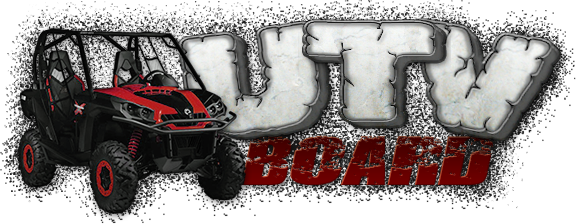Exhaust port matching
-
Similar Topics
-
By CapnWalleye
Just picked up a Hisun 500 that had shift issues (corroded fan gear) which I fixed. It also didn't seem to be running smoothly then all of a sudden it got worse. It seems to miss on both idle and when pushing the gas pedal to the floor and doesn't seem to be running at full power. I've been working with a local person who is walking me through some steps, but I'd like some input from this group as well. What I've done:
- drained the fuel tank and replaced it with 93 octane fuel and added heet to help with any water problems.
- replaced the fuel injector.
- disconnected the battery (several times) to allow the module to reset.
- set the valve clearance, both intake and exhaust, within specs ... intake was tight but exhaust seemed fine.
- replaced the battery.
- replaced the O2 sensor.
Nothing has helped. Not sure what the next steps are, but would appreciate any expertise that can be offered here.
-
By FTG-05
I want to ditch my Kubota RTV-XG850 and its moronic twitchy throttle design flaw, get rid of the problematic engine and the 40 mph purposely throttled speed.
So far, I'm looking at the Honda Pioneer 1000 and the Polaris Ranger 1000, both of which have 1000-1500 lb payload bed capacity.
What other makes and models should I be looking at?
Thanks for the help!
-
By A P
Hi
I have a 2022 hisun sector eps 550. 30amp fuse is blown for eps. Checked the motor and it’s fine. Opened up the controller and found a bad diode. Dealer wanted 500$ for the controller. Just posting this in case it helps someone. I couldn’t read numbers from the old one so just took a guess and replaced it with a 100v 3amp diode.
-
By Homeowner A
Coleman UT 400 has a strong sulfur/emissions smell from exhaust all the time. Kind of like it’s running rich and a catalytic converter is trying to make it run cleaner so it smells bad. Also misfires when warm. Idles fine. Full throttle fine. In between it cuts out. Do these have catalytic converters? Almost acts like it might be clogged if so.
-
-
By lincolnsq175
Ive searched and cannot find any performance parts that fit my machine.
I have a 2020 coleman ut400.
Im looking for machined sheave kit, programmers, cdi, exhaust and intake.
I know these are yamaha rhino clones but are they rhino 450 clones?
Any info is appreciated.
-








Recommended Posts
Join the conversation
You can post now and register later. If you have an account, sign in now to post with your account.
Note: Your post will require moderator approval before it will be visible.